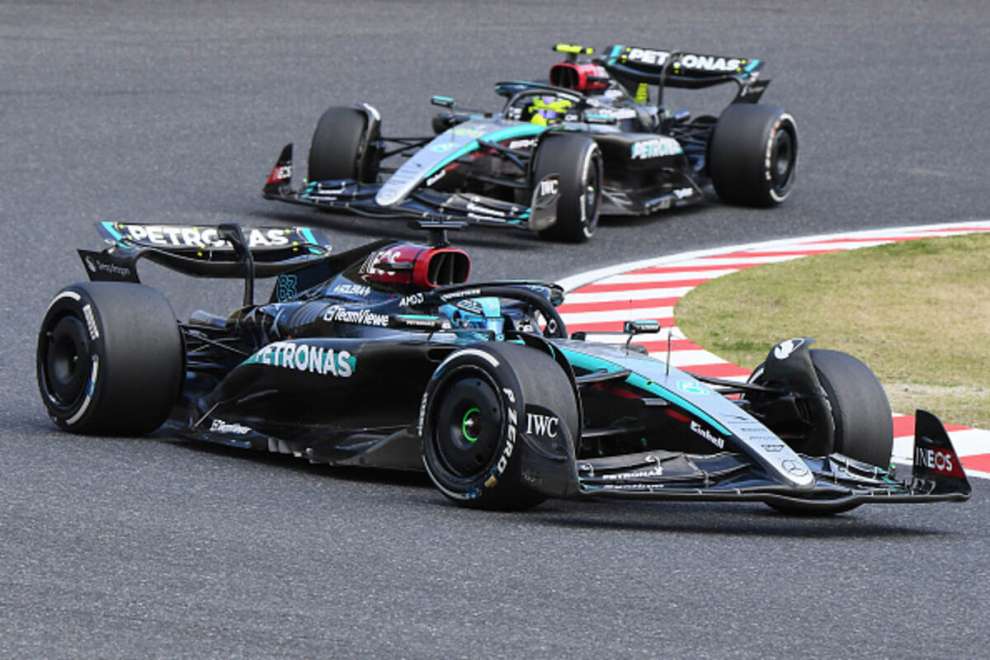By Carlo Platella
Work in progress at Mercedes. In Brackley, analyzes continue to find the key to the problem of vices that have gripped the Silver Arrows for three years. Toto Wolff does not hide from saying that the problem derives from a still incomplete understanding of the physics of current ground effect Formula 1 cars. The result is a car that is difficult to drive, increased in terms of aerodynamic downforce but not so much in lap times.
Melbourne data
In Suzuka the Star Team Principal returned to the difficult weekend in Australia, where the team collected decidedly unique data on the car. “With our sensors and pressure cells we measure the aerodynamic load”Wolff's words reported by Motorsport Week. “They tell us that compared to last year in a specific curve we have 70 more downforce points. In terms of lap time though, we're not going a single kilometer per hour faster. It makes no sense. What is the limiting factor?”
Ten load points correspond to 0.1 of the downforce coefficient of the single-seater, which is difficult to estimate precisely due to the influence of various factors. The numbers cited by Wolff however correspond approximately to a 20-25% increase in downforce compared to the previous car, which generally translates into a gain of around 6 tenths per lap. In Australia, however, the best of the Mercedes was less than 3 tenths faster in qualifying than the 2023 car, with the additional advantage of the softer tire brought by Pirelli.
The painting
It is difficult from the outside to find answers to the enigma plaguing Mercedes, if the team itself is unable to provide an explanation. The data collected in Australia opens the door to different interpretations, which are not mutually exclusive. If the limit of the W15 does not consist in the peak aerodynamic load, it may instead lie in the inconstancy with which the load is released during the curve, decreasing as the steering angles, yaw, heights from the ground and other conditions vary. Furthermore, balance problems cannot be ruled out, also linked to the temperatures of the tires on the two axles. All aspects that potentially they take away the confidence of the pilotsdiscouraging them from taking a corner more aggressively despite the increased downforce.
Another issue concerns the management of the increase in load and the imbalances between the mechanical balance at low speeds and the aerodynamic balance at high mileages. Something that technical director James Allison had already underlined on the eve of Suzuka: “There is something we can improve in the simulation models regarding the balance between high and low speeds, because this is where we find differences between what we see in the factory and in the real world.” Toto Wolff also returned to the topic in Japan: “I think the car is so complex for us in terms of where we put it in terms of mechanical and aerodynamic balance. These two aspects must correlate. We have followed a certain trajectory over the past few years and continue to go in circles. We're at a point where we need to do something different.”

The opposite of Red Bull
Mercedes' difficulties in translating aerodynamic gains into lap time mirror the development path followed by Red Bull. The RB20 is on average 7 tenths faster in qualifying than the 2023 car, despite having a maximum downforce level similar to last season. “You have to look at it from the perspective of lap timenot just as an aerodynamic number”, explains chief engineer Paul Monaghan, summarizing the philosophy of the world champions. “Your aim is to secure a platform to work with from a lap time perspective, not necessarily headline-grabbing load values.”
Mercedes has already started working in this direction, experimenting with a different set-up of the car in Japan, with encouraging results. Hamilton reported positive sensations from the car, which also performed well on the feared high-speed corners of the first sector. The hat-trick of Jeddah-Melbourne-Suzuka races, on circuits full of fast corners, penalized the Brackley team in terms of results, but exposed the problems, allowing them to be analyzed and addressed immediately. “Probably it's good to have started the season on these tracks”, concludes Russell. One more reason to look at the glass half full.
#Mercedes #enigma #downforce #useless